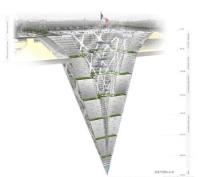 Add My Company
Add My Company
Sign In
Going Underground
10-07-2015

Will this be the way to solve overcrowding in big cities?
For years there has been concern over the space available for new buildings, whether it’s housing or industrial. Skyscrapers have got taller and taller and the space between buildings has reduced. But still, this isn’t solving the problem of overcrowding and in some countries planning authorities are becoming uncomfortable with the higher structures.
Living like the fictional Wombles, ‘underground’ is increasingly looking as though it could become a reality at some point in the future. We travel underground regularly, even using tunnels to get to other countries, so why not take that next step?
Some countries are already investigating the possibility of underground structures. Not necessarily deep ones, but more shallow, wider ones and not just for space reasons either. In less hospitable countries where long freezing winters make daily life a challenge, the possibility of having a more stable environment appears attractive.
One thing is for certain, if the next step is taken and we do develop underground living the key to success will be in the engineering.
Building tunnels for people and vehicles to pass through is one thing. Building structures that support the external pressures as well as maintaining suitable conditions inside, keeping people safe and comfortable, is another. The supporting structures will be critical to any developments whether they be made of steel or other materials.
Tokyo, whilst not having an underground living project already has a successful underground storage facility for the cities bicycles needing storage during the day. Cycling to work and across the city is increasing in popularity because of pollution fears, but it brings with it the problem of storage and possible theft.
The Eco Cycle Anti-Seismic Underground Bicycle park is only 7m wide but can store up to 144 bicycles. Only a small space at surface level is used to pay for and park the bicycle before it’s taken from street level down below the surface to the parking zone.
An ‘Earthscraper’ design that was originally submitted as part of an architecture competition in Mexico is being viewed in a different light. In Mexico new office, retail and living space is needed, but there is currently nowhere to put it. Regulations don’t allow the demolishing of older historic building and restrictions to height levels prohibit going any higher – the only place to go is down.
In Finland there is an underground masterplan that includes a lake, heating systems, an ice hockey hall, a swimming pool and a shopping centre. IN addition a tunnel linking Oulo in the north to Helsinki is also planned.
In other countries some roads have already been taken underground in a bid to free up surface space. In Boston, Massachusetts an elevated road considered to be an eyesore was taken below ground and a new tunnel constructed under the harbour. In Washington, a similar attempt to ‘bury’ an old and decaying road is in place, although it is having problems with the tunnelling.
Here in the UK there are 2 feasibility studies in place looking at taking the Hammersmith flyover and the South Circular road underground.
What’s your view? Do you think we’ll see more underground structures in the future?
For more information on Going Underground talk to PRV Engineering Ltd
Enquire Now
More News
List your company on FindTheNeedle.

